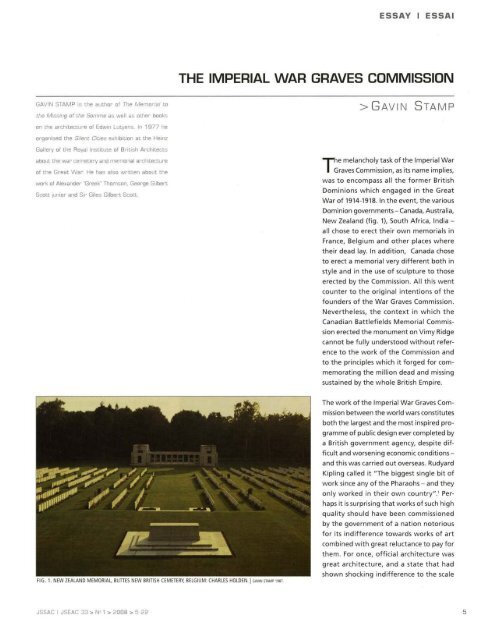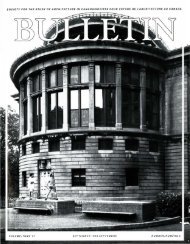CANADA - SEXTONdigital
CANADA - SEXTONdigital
CANADA - SEXTONdigital
You also want an ePaper? Increase the reach of your titles
YUMPU automatically turns print PDFs into web optimized ePapers that Google loves.
ESSAY I ESSAI<br />
THE IMPERIAL WAR GRAVES COMMISSION<br />
GAVIN STAMP is the author of The Memorial to<br />
the Missing of the Somme as well as other books<br />
>GAVIN STAMP<br />
on the architectum of Edwin Lutyens. In 1977 he<br />
or'ganised the Silent Cities exhibition at the Heinz<br />
Galler·y of the Royal Institute of Br·itish Arcl1itects<br />
about the war cemetery and memor·ial architectur-e<br />
of the Great War. He has also written about the<br />
work of Alexander' "Greek" Thomson, Geor·ge Gilbert<br />
Scott junior and Sir Giles Gilbert Scott.<br />
The melancholy task of the Imperial War<br />
Graves Commission, as its name implies,<br />
was to encompass all the former British<br />
Dominions which engaged in the Great<br />
War of 1914-1918. 1n the event, the various<br />
Dominion governments- Canada, Australia,<br />
New Zealand (fig. 1), South Africa, India -<br />
all chose to erect their own memorials in<br />
France, Belgium and other places where<br />
their dead lay. In addition, Canada chose<br />
to erect a memorial very different both in<br />
style and in the use of sculpture to those<br />
erected by the Commission. All this w ent<br />
counter to the original intentions of the<br />
founders of the War Graves Commission.<br />
Nevertheless, the context in which the<br />
Canadian Battlefields Memorial Commission<br />
erected the monument on Vi my Ridge<br />
cannot be fully understood without reference<br />
to t he work of the Commission and<br />
to the principles which it forged for com <br />
memorating the million dead and missing<br />
sustained by the w hole British Empire.<br />
FIG. 1. NEW ZEALAN D MEMORIAL, BUTTES NEW BRITISH CE METE RY. BELGIUM : CHARLES HOLDEN. I GAVIN STAMP 1987.<br />
The work of the Imperial War Graves Commission<br />
between the world wars constitutes<br />
both the largest and the most inspired programme<br />
of public design ever completed by<br />
a British government agency, despite difficult<br />
and w orsening economic conditionsand<br />
this was carried out overseas. Rudyard<br />
Kipling called it "The biggest single bit of<br />
work since any of the Pharaohs- and they<br />
only w orked in their ow n country".' Perhaps<br />
it is surprising that w orks of such high<br />
quality should have been commissioned<br />
by the government of a nation notorious<br />
for its indifference towards works of art<br />
combined w ith great reluctance to pay for<br />
them. For once, official architecture w as<br />
great architecture, and a state that had<br />
shown shocking indifference to the scale<br />
JSSAC I JSEAC 33 > N' 1 > 2008 > 5 -22<br />
5
















